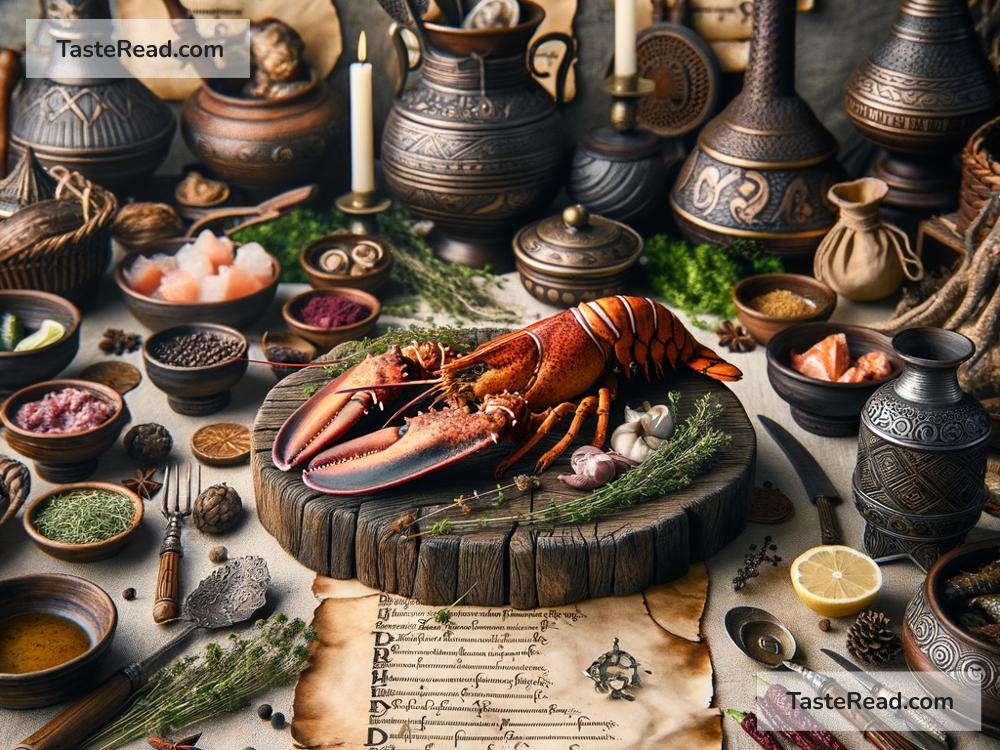The Origins of the First Lobster Tail Dish in Ancient Tales
When we think of delicious seafood, lobster tails often come to mind. Their rich flavor and tender meat make them a favorite dish around the world. But did you ever wonder where the idea of eating lobster tails came from? Stories passed down through history tell us fascinating tales about how lobster tail dishes might have first appeared in ancient times. Let’s dive into the origins of this tasty seafood tradition.
Lobsters in Ancient Times
Lobsters were not always seen as a fancy food for special occasions. In ancient times, these crustaceans crawled along the ocean floors, largely ignored by humans. Some coastal communities considered lobsters to be strange or even undesirable because of their hard shells and unusual appearance. In fact, lobsters were sometimes referred to as “sea insects” due to their resemblance to bugs!
However, people living along shorelines, especially in places like ancient Greece, Egypt, and the Mediterranean regions, relied on seafood for survival. They hunted and experimented with whatever the ocean could provide. While fish and shellfish were common, lobsters were not initially the star of the table.
Discovery Through Necessity
The story of lobster tails may have started with necessity rather than luxury. Ancient tales suggest that during times of hardship, coastal villages had limited access to food. Fishermen and gatherers had to turn to creatures they normally avoided, like lobsters. Over time, they discovered that once lobsters were cooked properly, they were not only edible but also delicious!
It is believed that early seafood cooks started by boiling lobsters to remove their tough outer shells. Once the meat inside was revealed, they were pleasantly surprised by its texture and flavor. Some ancient writings even describe lobsters as “hidden treasures” of the sea—a food source few had thought to explore before.
Tales from Ancient Greece and Rome
When researching lobster tail history, we find clues in ancient Greek and Roman texts. Although there is no record explicitly mentioning “lobster tails” as a specific dish, seafood—including lobsters—played a role in Greek mythology and Roman feasts.
In Greek mythology, the sea was home to gods and magical creatures. Ancient storytellers often described Poseidon, the god of the sea, surrounded by aquatic animals, including lobsters. Some myths say Poseidon offered lobsters to humans as a gift of sustenance. Whether this is true or just a story, it reflects the growing importance of seafood in Greek culture.
In Rome, wealthy citizens were known for their extravagant banquets, showcasing rare and exotic foods. Historical writings mention elaborate seafood dishes served at these feasts. While lobsters were likely served whole, it’s possible that the tastiest part—the tail—stood out as the favorite portion. Roman chefs were skilled at creating culinary art, so it wouldn’t be surprising if they prepared lobster tails with sauces or spices to impress their guests.
Early Techniques for Cooking Lobster Tails
The exact details of how ancient people first cooked lobster tails remain unclear. However, we can imagine how they might have experimented with simple methods like boiling, roasting, or grilling lobsters before serving them.
Archaeologists have uncovered remnants of ancient cooking pits near coastal regions, showing that seafood was often prepared on open fires or stone ovens. It’s quite possible that lobster tails were seasoned with common ingredients of the time, such as olive oil, sea salt, herbs like thyme or dill, and citrus flavors from lemons. These seasonings could enhance the natural flavor of the lobster meat, creating a primitive version of the lobster tail dish we enjoy today.
Lobsters Transforming from “Poor Man’s Food” to Luxury
For centuries after their discovery, lobsters—including their tails—remained a humble food for fishermen and poor communities. They were easy to catch, plentiful in certain regions, and not considered glamorous.
It wasn’t until much later, around the Middle Ages, that lobsters started gaining recognition as a delicacy. As trade and commerce expanded, seafood, including lobster tails, became prized by wealthy families and royal courts. Recipes for lobster began appearing in cookbooks, marking its transition from a simple survival food to an impressive centerpiece at feasts.
The Legacy of Ancient Lobster Tail Dishes
Although we may never know the full story of the first lobster tail dish, ancient people’s curiosity and resourcefulness played a key role in its discovery. What was once a creature of the deep ocean turned into a delicious source of nourishment and eventually evolved into the luxury dish we know today.
Ancient tales remind us that food history is often rooted in simple beginnings—finding ways to survive and make use of what nature provides. Today, when you enjoy a succulent, well-prepared lobster tail, you’re tasting a dish that has traveled through centuries of experimentation, storytelling, and evolving culinary traditions.
So, the next time you savor this ocean delicacy, take a moment to appreciate its ancient roots. It’s not just food; it’s a piece of history served on your plate!
Whether boiled, grilled, or baked with butter and spices, lobster tails carry an incredible legacy that ties us back to the resourceful cooks and diners of ancient times. And who knows? Maybe those first dishes were just as tasty as the ones we enjoy today!


